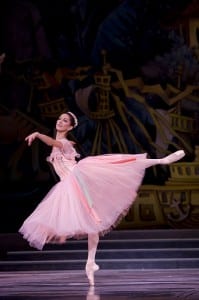 Every December, productions of The Nutcracker ballet add to the festivities and joy of the holiday season. You are probably already familiar with the story of a young girl who receives a magical nutcracker on Christmas Eve, but there are a few fun facts most people don’t know about The Nutcracker.
Every December, productions of The Nutcracker ballet add to the festivities and joy of the holiday season. You are probably already familiar with the story of a young girl who receives a magical nutcracker on Christmas Eve, but there are a few fun facts most people don’t know about The Nutcracker.
1. In Germany, there is a folklore tradition based on the idea that nutcrackers protect your family and bring your home good luck. For this reason, nutcrackers were often given to children at Christmastime.
2. The story for The Nutcracker ballet is based on a story by E.T.A. Hoffman entitled “The Nutcracker and the Mouse King”. The original story is much darker than the ballet, featuring a bloody battle between the Nutcracker and the Mouse King’s army, and the backstory of how the prince was changed into a nutcracker.
3. When The Nutcracker was first performed in Russia in 1892, critics were not impressed and the future did not look bright for this ballet. In fact, it wasn’t until George Balanchine’s production of the ballet in 1954 that the show began to gain popularity. By the late 1960s, The Nutcracker established itself as the essential ballet of the holiday season. Balanchine’s choreography is the version most often performed to this day.
4. At the first performance of The Nutcracker, the roles of Clara and the Nutcracker Prince were played by children. In later professional productions, these roles were given to adult dancers.
5. Although Tchaikovsky’s score for The Nutcracker is one of the best known pieces of his music, he did not feel it was his best work. The composer apparently felt that his earlier composition, the ballet Sleeping Beauty, was far superior to The Nutcracker.
6. Tchaikovsky died less than a year after the original production of The Nutcracker, never knowing the impact his work would have on audiences around the world for decades to come.
7. The uniquely twinkling instrument you hear in “The Dance of the Sugar Plum Fairy” is a celesta. Tchaikovsky smuggled this relative of the piano into Russia from Paris to add a unique sound to accompany the character of the Sugar Plum Fairy.
Want to dance in a ballet or play in the orchestra? Private lessons in music or dance are a great way to get the personal attention you need in order to thrive in the arts. TakeLessons prescreened, qualified teachers give private, one-on-one lessons in music and dance. Search for a music or dance teacher near you and start lessons now!
You might also like…
–How to Audition Like the Pros
–What’s Causing Your Stage Fright?
–The Ultimate Guide to Holiday Recital Preparation
–Megan L. TakeLessons Staff Member and Blogger
Photo by Pacific Northwest Ballet
Megan L.

